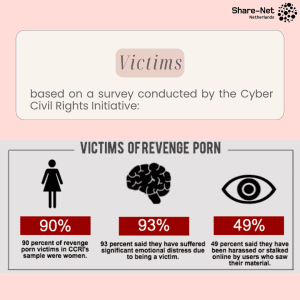Since the 1995 Beijing conference, technology has developed at a shocking rate, and with this new technology, new threats continue to emerge. As technology becomes an integral part of our daily lives, cyber violence has become a pervasive form of gender-based violence (GBV), disproportionately targeting women, girls, and marginalized groups. Online spaces, while offering opportunities for connection and empowerment, have also become sites of harm, where perpetrators leverage digital tools to harass, exploit, and silence individuals.
Forms of cyber violence include:




Cyber violence thrives on anonymity and the accessibility of digital platforms, making it difficult to trace perpetrators and hold them accountable. We need to continue fighting GBV wherever it manifests. Luckily, many organizations have been tracking and reporting on online GBV, and hopefully, this can eventually lead to policies and practices that make the online sphere safer for everyone.
Rutgers International recently published a study examining technology-facilitated gender-based violence (TFGBV) across seven countries: Indonesia, Jordan, Lebanon, Morocco, Rwanda, South Africa, and Uganda. The research sheds light on the complex interplay of local contexts, culture, and legislation in shaping how this violence is perpetrated and experienced.
Across different locations, they found there is a critical lack of knowledge and understanding about TFGBV, a spill over between online and offline violence, a disproportionate impact on vulnerable groups, and a tendency for patriarchy and social ideas of morality and gender roles to magnify TFGBV. The study pinpoints efforts to prevent and mitigate TFGBV, and offers recommendations for how nations, organisations, and communities can take action.
Check out Rutgers International’s full report: Decoding Technology-Facilitated Gender-Based Violence.
The Center for Countering Digital Hate (CCDH) recently released a study exposing Instagram’s failure to protect women and public officials from digital abuse. The research paints a troubling picture of how the platform is complicit in enabling gender-based violence by failing to enforce its community guidelines.
In the study, researchers reported 1000 of the worst comments on Instagram – sexist and racist abuse, death and rape threats, and rule-breaking offenses. The study showed how Instagram allowed 93% to remain on the platform. Instagram’s failure to uphold and enforce its community guidelines means the platform is failing women and, by extension, our society’s desire for equal opportunity and treatment for women.
This study underscores how technological advancements, particularly in social media, have been weaponized to perpetuate gender-based violence. Platforms like Instagram are not just passive bystanders; they actively shape the digital environment where abuse thrives.
The Irish Consortium on Gender-Based Violence (ICGBV) report examines how technology acts both as a tool for GBV and as a means to combat it.
Risks: Technology has amplified GBV in forms like cyberbullying, image-based abuse, and online harassment. Vulnerable groups, including women and LGBTQ+ individuals, face disproportionate harm, while abusers exploit digital tools for surveillance and control. Weak legal frameworks exacerbate these challenges, leaving survivors without recourse and perpetrators unaccountable.
Opportunities: Technology also holds transformative potential to address GBV. Digital tools enable survivors to access resources discreetly, while social media amplifies advocacy and raises awareness. Educational platforms foster cultural change, and evidence-collection tools strengthen the pursuit of justice.
Key recommendations from the report include developing responsive legislation, increasing research on TFGBV, particularly in low-resource settings, and holding tech companies accountable for user safety.Read the full report here.